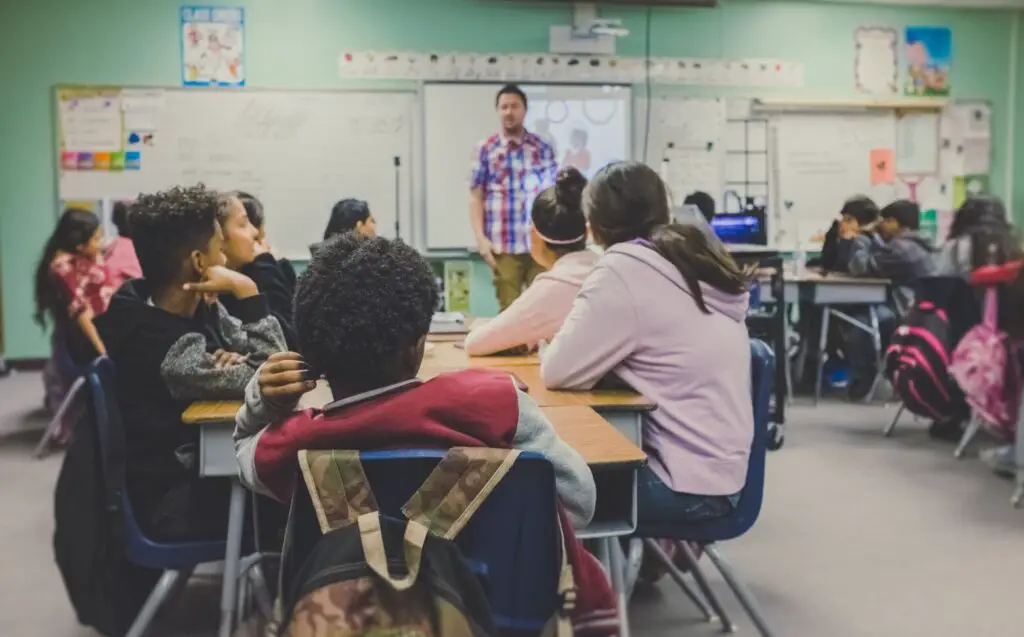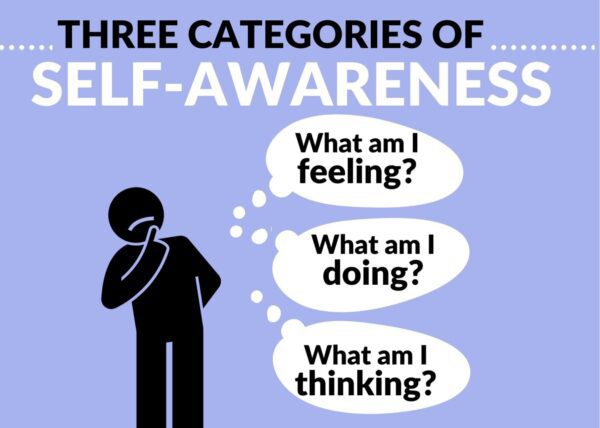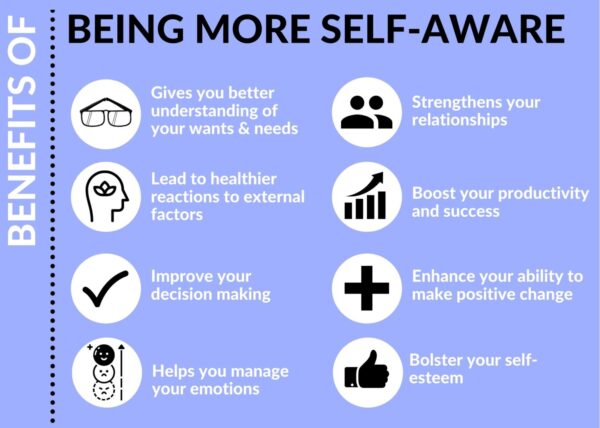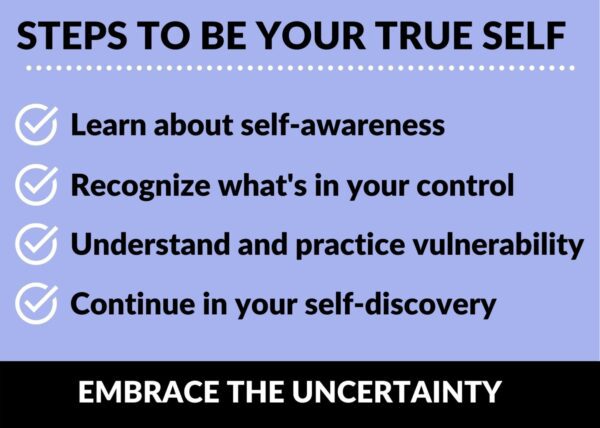Learn how to teach self-awareness to students and why it’s so important.
The list of things a teacher must teach their students is long. And it probably feels like it just keeps growing at an impossibly fast pace. However, one thing should be added to every teacher’s list because it will help both them and their students in nearly every aspect of learning.
Teaching self-awareness to students is a game-changer.
If you’ve made it to this article, then you probably already know that teaching self-awareness is something worth learning about. Still, it’s helpful to understand just how beneficial self-awareness is for students. Let’s dive into what self-awareness is, why it’s important, and how to teach self-awareness to students.
.
What is Self-Awareness for Students?
Self-awareness is one’s ability to identify and understand their feelings, thoughts, and behaviors. These three main categories, while seemingly simple, encompass every aspect of our lives; being self-aware extends from our goals to our relationships to our learning process.
Self-awareness also includes understanding how we think about ourselves. Our mindset becomes so entwined from an early age that we often don’t question it. However, we must unravel this knot to best improve our self-talk and limiting beliefs. These elements drastically affect our ability to learn new things, so teaching self-awareness to students is crucial.
Self-aware students will be able to better:
- Label their emotions in the moment
- Connect their actions with their feelings
- Recognize the patterns (good and bad) that they fall into
- Understand their strengths and areas of improvement
- Identify how their mindset affects their actions
- Implement reflection on a regular basis
Many schools use the term Social-Emotional Learning to teach emotional intelligence. Countless studies have proven how beneficial Social-Emotional Learning is in the classroom, and self-awareness fits well under this umbrella label. It’s crucial to understand, though, that self-awareness is also an umbrella in itself–and one that extends to every corner of our learning and lives.
.
Why is Self-Awareness So Important?
By this point, it should be no surprise that teaching self-awareness isn’t just for students. We all benefit from being more self-aware. It’s linked with greater happiness, stronger relationships, more success, and overall more purpose-driven lives. Being self-aware also helps us understand what we can and can’t control. It also helps us understand and improve our self-concept.
The problem is that achieving self-awareness is super difficult.
Why? Because our human nature is working against us. We’re dealing with outdated brain functions and survival instincts rooted in ancient times. As a result, we often become caught up in defensive emotions and biases that prevent us from being self-aware.
What’s more, learning how to be self-aware isn’t a one-time thing. You can’t check “Self-Awareness” off your to-do list. It’s something you must continually come back to as you grow and evolve in life. (That said, you can certainly strengthen and build your foundation of self-awareness skills.)
Teaching self-awareness to students is critical because as we get older, we begin to further solidify our mindsets and behaviors without realizing it. By the time we’re adults, we’ve got to work hard to change and let go of decades’ worth of patterns.
On the other hand, students are still developing their brains and routines. While they may have more limited maturity, they also have more limited experiences to muck through while searching for the truth. Activities can go a long way in setting them on the right path.
.
Why You Should Teach Self-Awareness to Students and Yourself
Teaching self-awareness to students will help them in the present and the future. As they develop their self-awareness skills, they’ll be able to identify and communicate their needs more to others. Think of self-awareness as an empowerment tool; once kids know what they want to say, they can practice expressing it.
Teaching self-awareness also gives them tools to utilize in other areas of their learning. They can recognize what works for them, what challenges them, and what actions will help them get to where they want to know.
If this list sounds overstated, it’s not. Once again, these benefits span from kindergarteners to 65-year-old leaders. We all can benefit from being more self-aware–teachers included. Being able to model self-awareness to your students is one of the many ways you can begin to teach it in your classroom.
Without further ado, let’s dive into five strategies that you can use to teach self-awareness to students.
.
5 Strategies to Teach Self-Awareness to Students
-
Build your students’ knowledge and practice with emotional language
One of the biggest obstacles to self-awareness is our feelings. Emotions change, combine, build, flip, switch, take over; they’re pretty much in constant emotion, starting for unknown reasons and moving in unknown directions. At least, unknown at the beginning. This continuous fluctuation will always make it challenging to identify them. (And we can’t really manage them. Not entirely, anyway). Another challenge is that many of us have a minimal emotional vocabulary. We struggle to identify our emotions because we don’t know how to label them accurately.
Sometimes younger kids are better than adults because, unlike adults, they don’t try to intellectualize their feelings or put them under the catch-all label of, “I’m feeling stressed.” Still, most people only use 3-5 emotional words regularly. When teaching self-awareness to students, you want to equip them with a wide range of emotional words. Just like you’d give students a foundation of science terms or math multiplication tables, giving them an emotional vocab will expand their ability to learn more about themselves.
You also will want to implement practice with these words. When have they experienced this emotion? What did it feel like in their bodies? What did they do as a result?
Resources:
.
-
Implement regular self-reflection into your classroom
The concept of reflection is far from new for teachers. We know that thinking about our thinking is where the real learning happens; reflection makes knowledge stick. The same is true when it comes to self-awareness. If you implement regular self-reflection in your classroom, students will begin to build their self-awareness muscles.
Teaching self-awareness through reflection doesn’t require significant changes. You can use very common practices to make it part of your everyday teaching. One way is to encourage moments of self-reflection through journaling or discussions. Use open-ended prompts and encourage students to respond with statements about what they think, feel, or believe.
Second, you can incorporate more questions into your reflections and assignments that focus on the students’ personal experiences. These questions might include:
- What did you do well with this project?
- What emotions did you experience during this project? How did you handle these emotions?
- What attitude did you adopt? How did your attitude change throughout the experience?
- What did you learn about yourself? What did you learn about what you need to feel most successful?
The students might have difficulty answering these questions at first, but the more they do them, the easier they’ll become. You can also change up the questions specific to what you’re doing. Soon, teaching self-awareness to students won’t feel like a separate lesson; it’ll become a part of it.
Want inspiration for reflection questions? Check out my questions series.
.
-
Incorporate self-awareness activities daily
While reflection can seamlessly incorporate self-awareness into curriculum learning, it’s still beneficial to teach self-awareness as its own subject, as well. You can draw from several different emotional intelligence activities when you want to do this. This list of 20 Self-Awareness Activities will give you a great place to start.
The best part of self-awareness is that it applies to everyone of every age. You might want to adopt some elements of these activities based on the age of your students, but everyone will still benefit from working with these activities.
You can decide how to incorporate these activities into your schedule. Perhaps it’s a daily ritual, a weekly “Self-Awareness” corner, or a focused series of activities. Whatever you choose, make sure to explain to your students why it’s so important so they invest.
.
-
Celebrate self-awareness as much as other measures
Even the most challenging students want to do well with what’s being asked of them. The problem is most of our measurements focus solely on grades and core subjects (and don’t even get me started on standardized testing). As you teach self-awareness to your students, find ways to celebrate it as much as possible. The students will value what you value if you show them how.
If a student makes a good reflection, praise them for their insightfulness. Highlight meaningful “aha” moments that students experience. Celebrate the improvements that students make as they learn to be more self-aware, use emotional language, and recognize their behaviors.
Finally, try to connect the positive benefits that come from self-awareness. If a student identifies the pattern she falls into when she’s angry and then changes it, make sure to emphasize that it was her self-awareness that helped her make the positive change.
.
-
Model self-awareness and vulnerability to your students
As you celebrate self-awareness to your students, you also want to model it. I don’t need to tell you that children are perceptive sponges; you already know that. They’ll pick up on it if you preach self-awareness but don’t practice it.
Find ways to share your moments of reflection and realizations with your students. Help them see where you connected your emotions and thoughts to your behaviors. Many teachers shy away from these invaluable sharings because it feels vulnerable; however, vulnerability is crucial in becoming more self-aware. Plus, there are countless ways to model self-awareness without sharing private information.
Finally, by engaging in self-awareness activities with your students, you’re showing them that it’s a life-long process. This will help reinforce that learning how to be self-aware is a valuable, ever-evolving skill that requires time and attention.
.
Make Sure to Teach Self-Awareness to Students as Ever-Evolving
The beauty (and frustrating) part of self-awareness is that we’re never done. What we might have believed last week could change tomorrow. Our values and beliefs change as we grow older, engage with new relationships, and encounter new life circumstances.
Adults who didn’t learn how to be self-aware when they were young have a really tough time with these changes as they get older. When faced with self-perceptions around identity, we have a challenging time letting go. This is just another reason why it’s vital to teach students self-awareness. They can learn and experience that change is okay–or, even better, valuable to their overall happiness.
.
Conclusion: How to Teach Self-Awareness to Students
Five strategies for teaching self-awareness to students are:
- Build your students’ knowledge and practice with emotional language
- Implement regular self-reflection into your classroom
- Incorporate self-awareness activities daily
- Celebrate self-awareness as much as other measures
- Model self-awareness and vulnerability to your students
Remember, developing your own self-awareness as an individual is just as important as teaching self-awareness to students. For more helpful resources, check out the list of articles below. You can also subscribe with your email to receive an engaging How to Be Self-Aware EBook that is loaded with self-awareness activities, tips, and questions.
What self-awareness is and if you’re lacking it
- How Self-Aware Are You? Free Self-Awareness Test
- 6 Examples of Self-Awareness in Everyday Life
- Why Self-Awareness Is Important: Recognize What You Can Control
How to be vulnerable and embrace your inner truth
- How to Find Direction in Life If You’re Feeling Lost
- Why Feeling Awkward Might Be Your Superpower
- How to Be True to Yourself: The Hidden Truth We Need to Embrace






